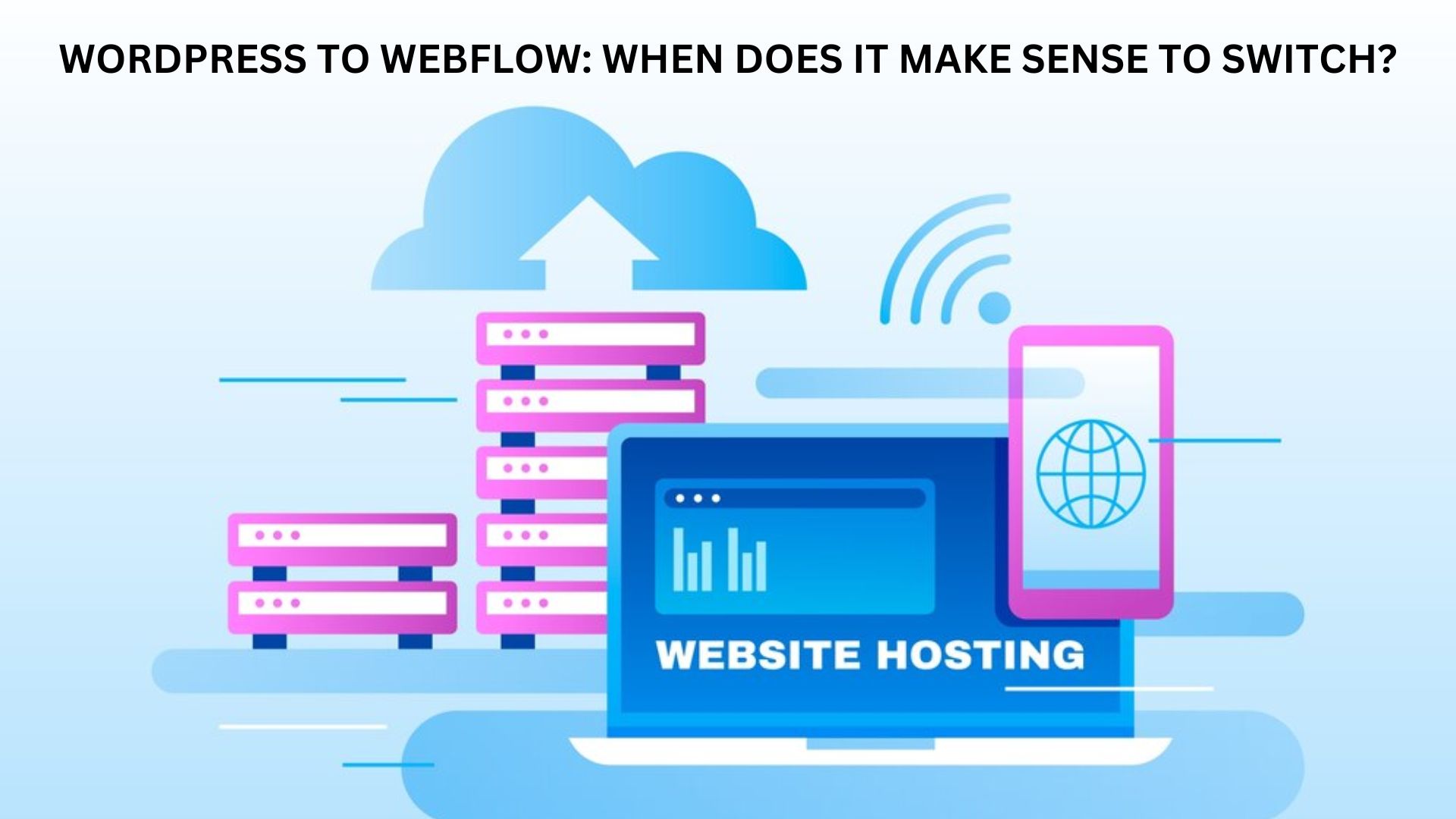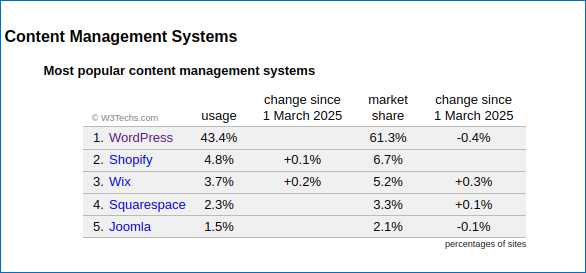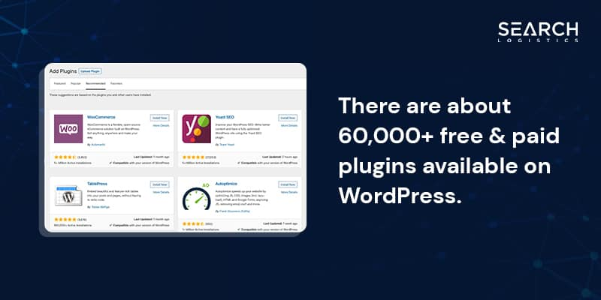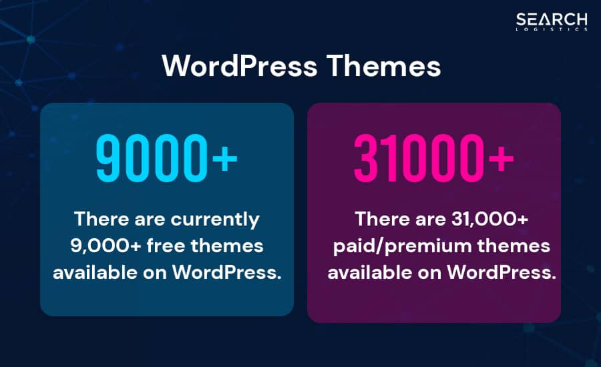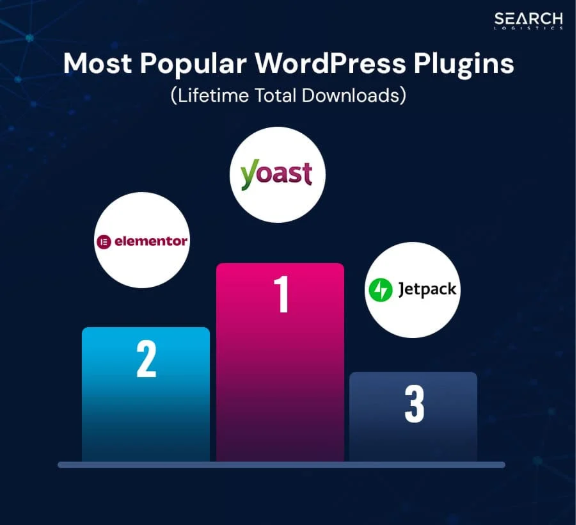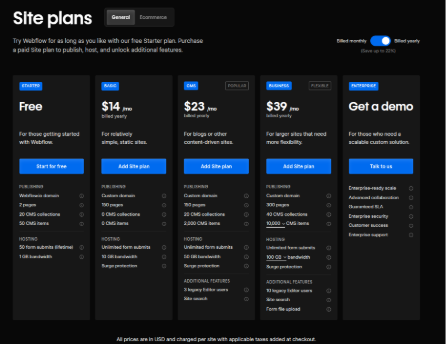Webflow stands out for its attractive interface and visual-based design approach, yet numerous business operations have stopped its usage due to demanding requirements beyond aesthetics.
You could spend too much time scaling content, battling complex CMS structures, or being constrained on implementation limitations that could require workarounds or quite costly customized code. It could also become challenging to integrate advanced features such as multi-language support, custom forms, or third-party tools.
Furthermore, if you manage a significant amount of content on your site, plan to get multiple content contributors working for your site, or hope to tackle SEO beyond surface-level settings, Webflow’s neat design feels like a cage rather than a canvas.
Meanwhile, WordPress remains the most popular website platform since it controls 43.7% of the global market, with its massive dominance eclipsing Webflow, which only maintains 0.8% of the total. It offers complete control along with an expansive system that grows with your requirements.
WordPress offers solutions that grow in tandem with your business objectives, ranging from basic article updates to sophisticated enterprise-level deployments. So, if you are hitting the roof with Webflow’s features compatibility, it might be time to think about moving your website from WebFlow to WordPress.
Still not convinced?
Keep reading!
Where Webflow Falls Short: Key Limitations to Know
The primary popularity of Webflow originates from its visual design features, which enable you to build dynamic, responsive sites while avoiding code-writing processes.
However, during web expansion, you can encounter noticeable constraints:
1. Limited Plugin Ecosystem
Webflow users need to recognize its lack of a wide plugin selection when compared to WordPress platforms. This means incorporating powerful functionalities, which usually involve custom development or third-party integrations.
Take, for instance, if you require a dynamic booking system, multilingual support or handling complex forms; you will have to either create it from scratch or go down a costly workaround, some of which fail to integrate nicely.
2. Scalability Concerns
For smaller sites, Webflow’s CMS is a good fit. However, managing large volumes of content or complicated site structures is challenging with Webflow. It enforces collection item limits (10,000 per CMS collection as of 2025) without version control or a staging environment.
Therefore, this can pose a serious limit on platforms that are content-heavy, like media sites or huge e-commerce catalogs that have to be updated frequently and have deep structural hierarchies.
3. Cost Implications
For some feature add-ons and scaling up to multiple sites, Webflow’s pricing can quickly skyrocket. On the flip side, WordPress provides more options for hosting and scaling.
Although Webflow offers hosting as a part of their plans, you’re limited by their infrastructure, which you might not like if you have more than the average enterprise traffic or bandwidth needs.
4. SEO Limitations
Webflow offers basic SEO tools; however, it does not extend to very advanced or flexible functionality like the WordPress with Rank Math or Yoast SEO plugin. WordPress provides rich schema support, auto meta tag generation, SEO analysis, and integration with tools like SEMrush and Google Search Console.
These are just an edge over competitive markets as they let you have much more granular control of how content is indexed, ranked, and even displayed across search engines.
Overall, if your business is based on good content performance, deep integrations, or advanced scalability, the above-listed constraints are entry barriers to the growth of your business.
In this case, Webflow to WordPress migration can be both profitable and even necessary.
What Makes WordPress So Powerful?
With a whopping 61.3% of the market share when it comes to content management systems (CMS), WordPress truly plays a key role in the website development space. Its features are suitable for a wide range of website requirements.
1. Extensive Plugin Library
WordPress is a very customizable and trusted platform with over 60,000 free and paid plugins that you can use to get functionalities ranging from advanced SEO to e-commerce.
From adding a contact form and optimizing for speed to integrating with third-party platforms, plugins are available for almost everything.
Unlike Webflow, where what you can do is limited, WordPress’s plugin ecosystem allows for easy functionality extension along with business continuity without incurring a custom development fee.
2. Scalability
No matter how small or large your website might be, WordPress can accommodate it and as your business continues to expand, so can your platform. So, whether it’s a small portfolio site or a large e-commerce store, WordPress can grow with more traffic and a greater amount of content, as well as a more complex site structure.
Plus, you have the benefit of hosting your website either on the cloud, VPS, or dedicated server, depending on your business goals as you grow.
3. SEO Capabilities
Plugins such as Yoast SEO offer all the important optimizations for your site, from meta tags generation to site mapping, which, as a result, improve the visibility of your site in search engines.
In addition, WordPress provides control down to the granular level over headings, internal linking, and overall structure of the content, ensuring your site is in line with the latest SEO requirements.
Additionally, by frequently updating and connecting to Google Analytics, you can track your SEO progress in real time and make necessary adjustments to boost organic traffic.
4. Community Support
WordPress has a huge global community that provides a wealth of resources, tutorials, and forums to help you overcome any difficulties that arise. A great number of developers, designers, and users contribute to WordPress forums, tutorials, and knowledge bases.
This essentially means there is no issue that couldn’t have been resolved already by someone, making troubleshooting and problem-solving fast and efficient compared to Webflow.
5. Cost-Effective
Being open-source, WordPress actually does not cost anything. You can choose hosting providers within your budget, and there are plenty of high-quality themes and plugins for free.
In fact, there are 9,000 plus free themes, so you have an extensive amount of choice to build a website that best matches your vision.
In addition, with competitive pricing on premium themes and plugins, WordPress continues to be one of the most economical CMS solutions out there, particularly when compared with platforms such as Webflow.
So, whether you are at the very initial stages or you have already become a large enterprise, WordPress is an affordable and scalable platform you can use in any developing stage of your business.
Overall, if you want to get on a platform that offers full control, has powerful SEO tools, and future-proof solutions, WordPress is a top contender.
Essential Technical Factors to Consider Before Migration
When migrating from Webflow to WordPress, there are several technical steps to take to ensure data integrity and website functionality:
1. Content Export and Import
Content export from Webflow is available as a CSV, so you can easily move text-based data. However, when you need to export images and media, you might need to do that separately.
Such data can be imported into WordPress using tools such as WP All Import or the WordPress Importer plugin for accurate post, page, media, category, and tag transfer. It can save you hours of manual work, but it needs to be carefully mapped to make sure all copies land in the right structure.
2. Design Recreation
Despite the fact that Webflow’s designs are incredibly different and custom, WordPress has a wide number of page builders like Elementor, WPBakery, or Gutenberg to make or even improve the visual appearance of your site.
Their drag-and-drop features and customizable templates allow you to replicate your design with little or no additional flexibility for responsiveness. For instance, if your Webflow design relies on complex animations, you can leverage Elementor’s features or custom CSS to get a similar effect in WordPress.
3. URL Structure and SEO
Maintaining your site’s URL structure is crucial to preserve SEO rankings, as changing URLs can result in broken links and lost traffic.
During migration, it’s essential to implement 301 redirects for any pages whose URLs change. This ensures that visitors and search engines are automatically redirected to the correct pages.
Additionally, you should verify that all metadata, including title tags and descriptions, is correctly transferred.
Tools like Yoast SEO (top SEO plugin) for WordPress can help manage and optimize these settings to maintain your search engine visibility.
4. Functionality Replication
Identify functionalities in your Webflow site, like e-commerce features, forms, or custom animations and find equivalent plugins or custom solutions in WordPress to replicate them.
For instance, if your Webflow site has an e-commerce component, you’ll likely need to use WooCommerce on WordPress, which has a wide array of plugins to add specialized features such as payment gateways or advanced shipping options.
For custom interactions or animations, plugins like Slider Revolution or custom JavaScript might be required. Migrating from Webflow to WordPress requires a well-planned approach to ensure a seamless transition, preserve SEO rankings, and maintain site functionality.
Nevertheless, with the right tools and attention to detail, you can smoothly transfer your site’s content, design, and features while minimizing potential issues.
Boosting Performance and Security with WordPress
Transitioning to WordPress opens avenues to optimize your site’s performance and security:
- Caching and Speed Optimization: Plugins like W3 Total Cache or WP Super Cache can significantly improve load times. Image optimization tools like Smush or Imagify further enhance performance.
- Security Measures: Implementing security plugins such as Wordfence or Sucuri provides firewall protection, malware scanning, and login security. Regular updates and backups are essential to maintain site integrity.
- Regular Maintenance: Keeping themes, plugins, and the WordPress core updated ensures compatibility and protection against vulnerabilities.
Cost Analysis: Webflow vs. WordPress
Understanding the financial implications is vital when considering a platform switch:
Webflow
Offers tiered pricing based on site complexity and features. While it includes hosting, costs can accumulate with additional sites or advanced functionalities.
WordPress
Being open-source, the WordPress core software is free. Costs are associated with hosting, premium themes, and plugins. However, the availability of free resources and competitive hosting options often make it a more budget-friendly choice in the long run.
Ready to Upgrade? Here’s When to Transition to WordPress
Evaluating your current and future needs will guide your decision:
- Growing Content Needs: If you’re planning to expand your content significantly, WordPress’s robust CMS capabilities are advantageous.
- Advanced Functionalities: WordPress offers extensive solutions for features like e-commerce, membership sites, and multilingual support.
- Budget Constraints: If Webflow’s pricing becomes prohibitive, WordPress will provide more flexibility in managing costs.
- Desire for Ownership and Control: WordPress allows complete control over your site’s code, data, and hosting, offering greater autonomy.
WordPress Your Next Digital Home
Transitioning from Webflow to WordPress is a strategic move for organizations seeking greater flexibility, scalability, and control over their web presence.
By carefully planning the migration process and leveraging WordPress’s extensive resources, organizations can create a more robust and adaptable website that aligns with their long-term goals.
If you’re considering making the switch, assess your current and future needs and consult with experienced professionals to ensure a smooth and successful transition.

